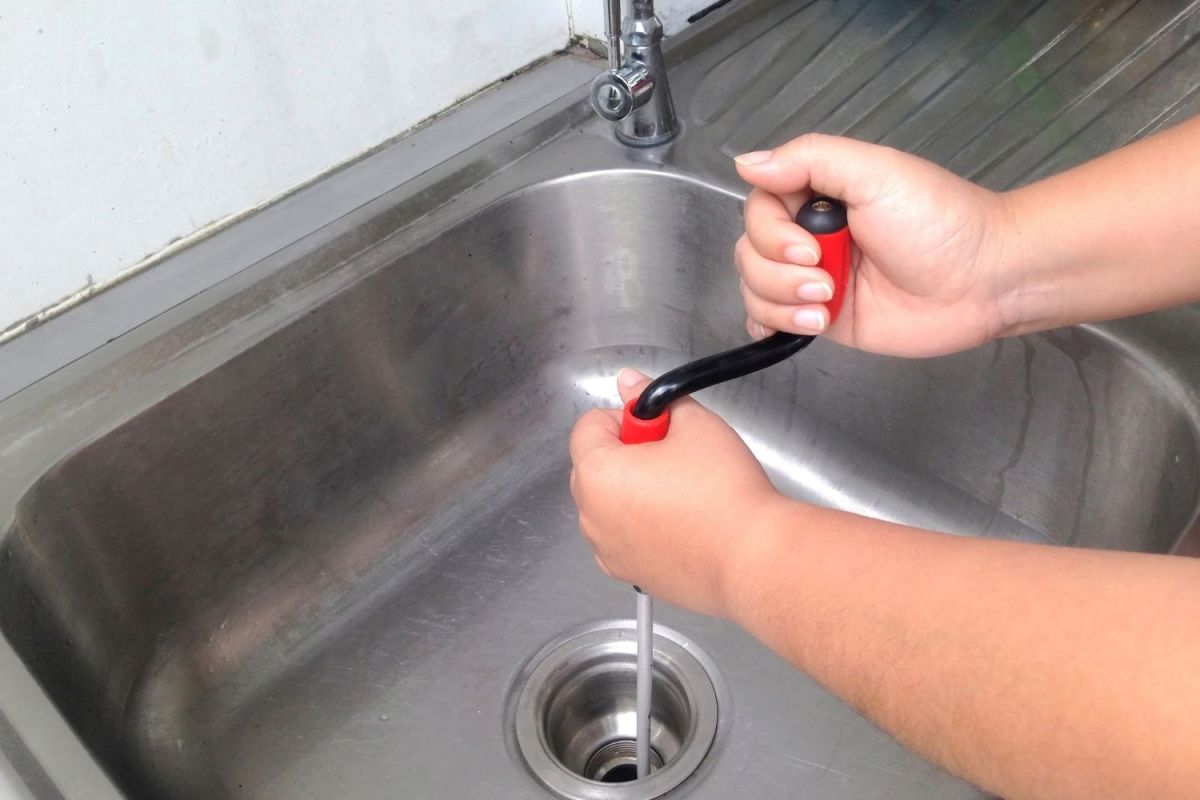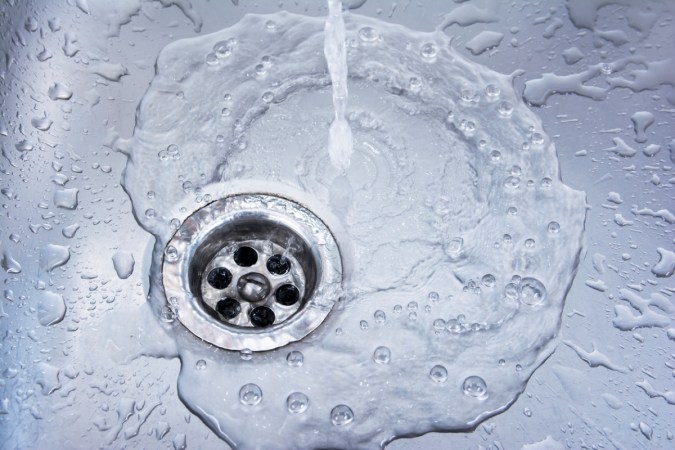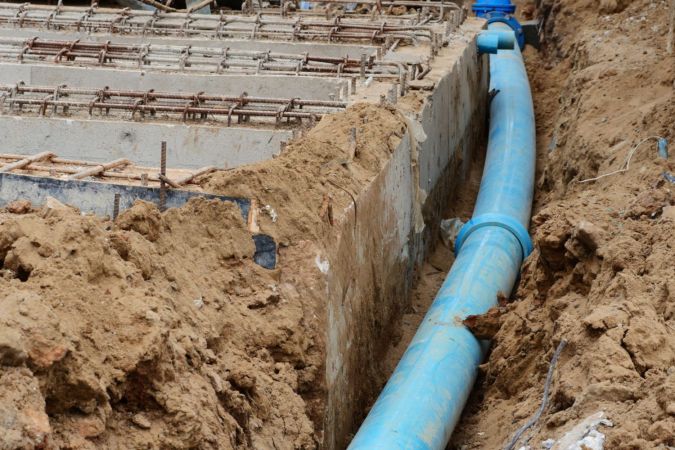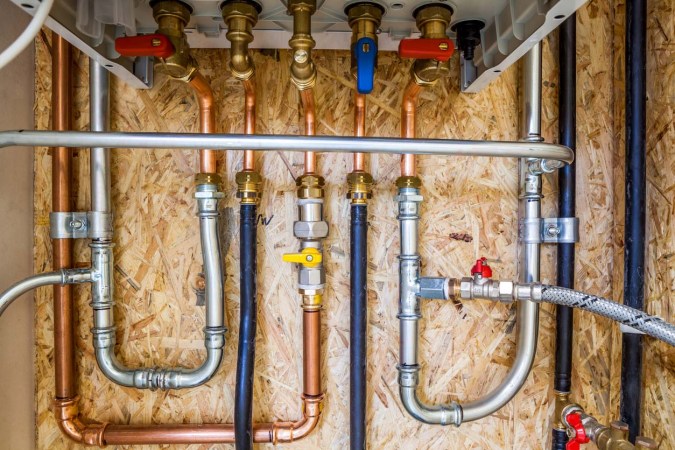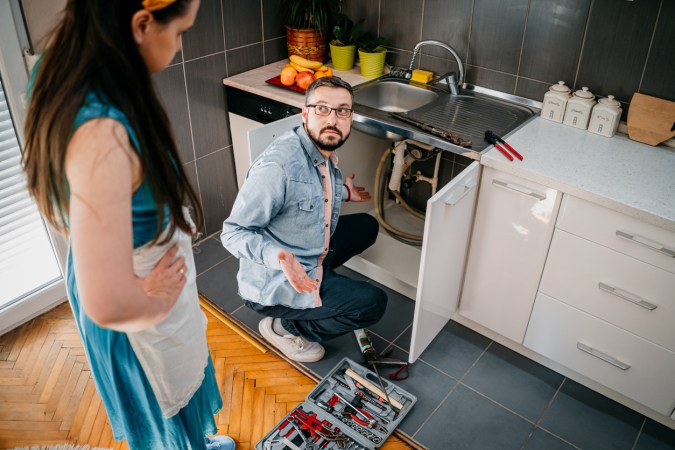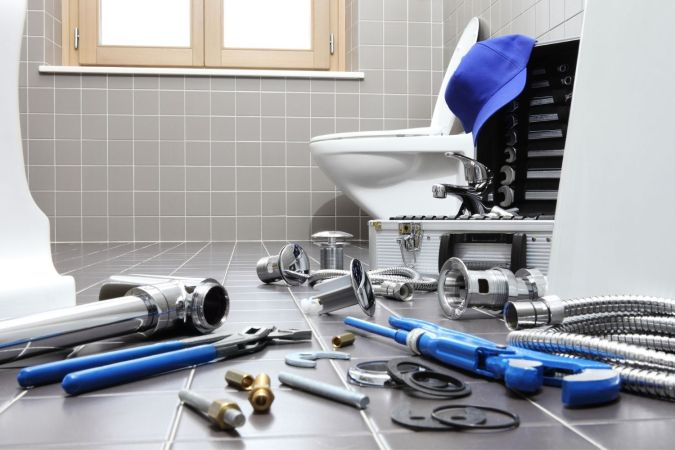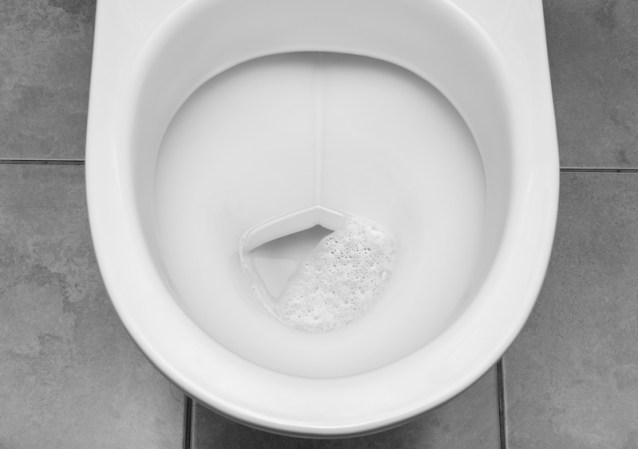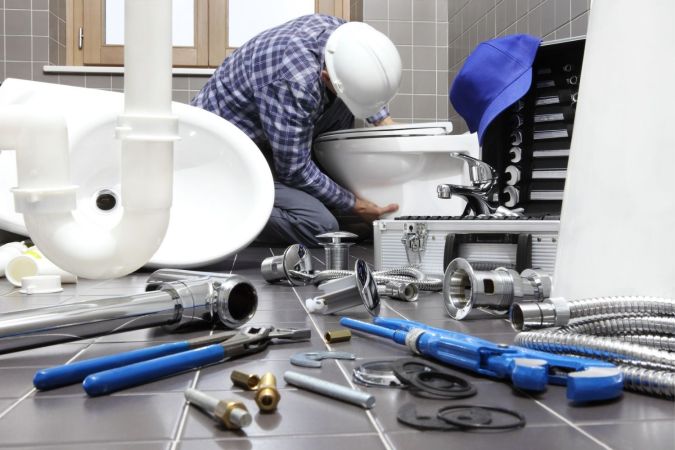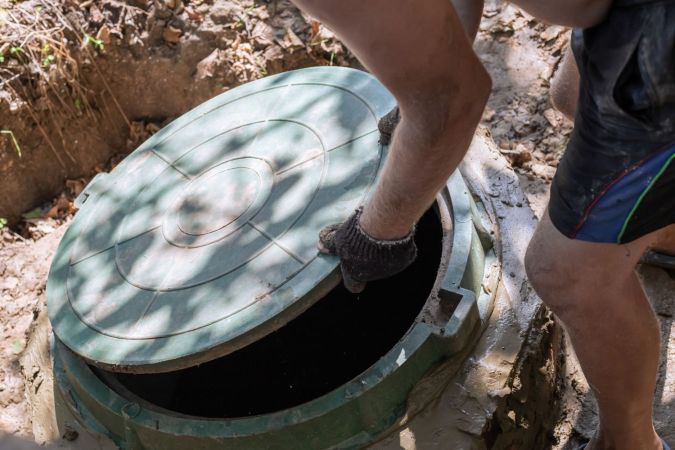We may earn revenue from the products available on this page and participate in affiliate programs. Learn More ›
Highlights
- The typical cost to snake a drain ranges between $145 and $350, with homeowners paying an average of $237.
- Some of the main factors affecting the cost to snake a drain include the price of labor, the severity and location of the blockage, the number of blockages, the cause of the problem, and the type of drain.
- A drain may need to be snaked if the homeowner notices slow drains, water backups, unpleasant smells, gurgling sounds, or if there’s a clogged or overflowing toilet.
- Homeowners may be able to handle small drain clogs themselves with DIY methods, but it’s advisable to hire a professional plumber for more severe clogs or those located in the main sewer line.
It’s a common nightmare scenario: The toilet clogs, or a drain backs up and renders the sink or shower unusable. A clogged drain can be caused by many issues, such as food scraps, hair clogs, soap buildup, grease, tree roots, pipe damage, or corrosion. If the blockage isn’t in the household pipes but in the sewer lines, a sewer camera inspection will be needed to discern exactly where the blockage is located. Snaking is a common way to clear blockages and clogs. A plumber will push a long coiled drain auger, sometimes called a plumbing snake, rooter, or toilet jack, through the pipes to dislodge the blockage. The plumbing snake is very flexible and thin so it can travel through the P-trap, or the curved pipe under toilets and sinks. The P-trap is the prime location for clogs in plumbing lines. Depending on the location and severity of the drain clogs, a plumber may use either a hand snake or a motorized option.
How much does it cost to snake a drain? According to HomeAdvisor, the price ranges from $145 to $350, with the national average at $237; complex clogs can cost $350 or more. The overall price varies according to local hourly labor rates, the severity of the clog, the number of clogs, location, the type of drain, and the cause of the blockage. If the plumbing needs to be repaired, the cost of the materials and replacement parts needs to be factored into the project total. Some homeowners prefer to pay the cost of a plumbing inspection to help prevent larger issues. While homeowners insurance policies may cover some plumbing-related problems under certain circumstances, it’s likely that homeowners will need to spend money out of pocket for repairs.
Professional plumbers typically charge by the hour, but some may charge a flat rate for snaking a drain. The average price range for labor is usually between $45 and $200 per hour, but the rate for emergency services can be much higher. This guide will look into the important factors that influence the cost to snake a drain, additional price factors that can change the overall cost to clear a drain, the difference in pricing according to the type of drain, and what’s considered an affordable price for drain clearing services.
Factors in Calculating the Cost to Snake a Drain
While many homeowners spend between $145 and $350 to snake a drain, the overall price can vary from the national average of $237 due to a few important factors. These can include local labor prices, the severity of the blockage, the location of the clog, the number of blockages, the cause of the blockage, and the drain type. The best home warranties for plumbing coverage, such as those from American Home Shield and Choice Home Warranty, can cover plumbing costs.
Labor
Some plumbers will charge a flat rate for snaking a drain, and others will charge by the hour. How much does a plumber cost? The average plumber cost ranges from $45 to $200 per hour, and the fixed price to clean drain pipes is around $230. If the drain needs immediate attention, an emergency drain cleaning or sewer line cleaning company will need to be hired. Emergency plumber services and calls on weekends and holidays will incur an additional charge of between $100 and $300, in addition to the charge for snaking the drain. Overall, the rates a plumbing company charges are influenced by the complexity of the job, geographic location, season, and travel distance. Homeowners will want to keep in mind that hiring a master plumber will come at a cost that’s on the higher end of the hourly labor range compared with the cost of a plumber who doesn’t have such distinguished credentials.
Blockage Severity
The more difficult it is to clear a blockage, the more it will cost. A simple clog can sometimes take just a few minutes to clear, while a more severe blockage can take hours or days to remedy. For a sewer line blockage, a plumbing contractor may use a camera to identify where the blockage is located and what is causing the clog. If video inspection is used multiple times to pinpoint the blockage location and clear the drain, the cost of labor will be more expensive.
Blockage Location
The farther down the pipes the blockage occurs, the more expensive it is to clear. Typically, it’s less expensive to snake a drain to clear a clog in the pipes inside the house, such as those in a toilet or sink. Sewer line cleaning costs range from $100 to $800, depending on the location of the blockage. The more time a plumber takes to snake a drain, the more it will cost in labor.
Number of Blockages
If there are multiple clogs in the pipes or in the main sewer line, it can be a costly job. Multiple blockages require the use of video inspection to discover the cause and the location of the clogs. If the problem is in the main line, tree root removal or sewer line repair may be needed, which will increase the overall price of the project.
Blockage Cause
The cause of the drain blockage also impacts the cost to clear it. Clogs that are caused by food waste, hair, and soap buildup are easier to clear than blockages caused by tree roots, grease, corrosion, or pipe damage. These types of blockages are much more difficult to remedy, and some cannot be cleared with the use of drain snakes. Additional repairs or replacement of plumbing lines will result in a higher price tag.
Drain Type
The cost to clear a sink, toilet, or shower drain is usually less than for other types of drains, such as the main line or a laundry drain. Clearing multiple plumbing fixtures or the main line can cost considerably more. Hiring a plumber at the first sign of a blockage can prevent the problem from getting worse. Some of the most common areas to find a drain blockage are in the bathtub, shower, kitchen sink, laundry, toilet, and main sewer line. Each of these drain types is discussed in a section below.
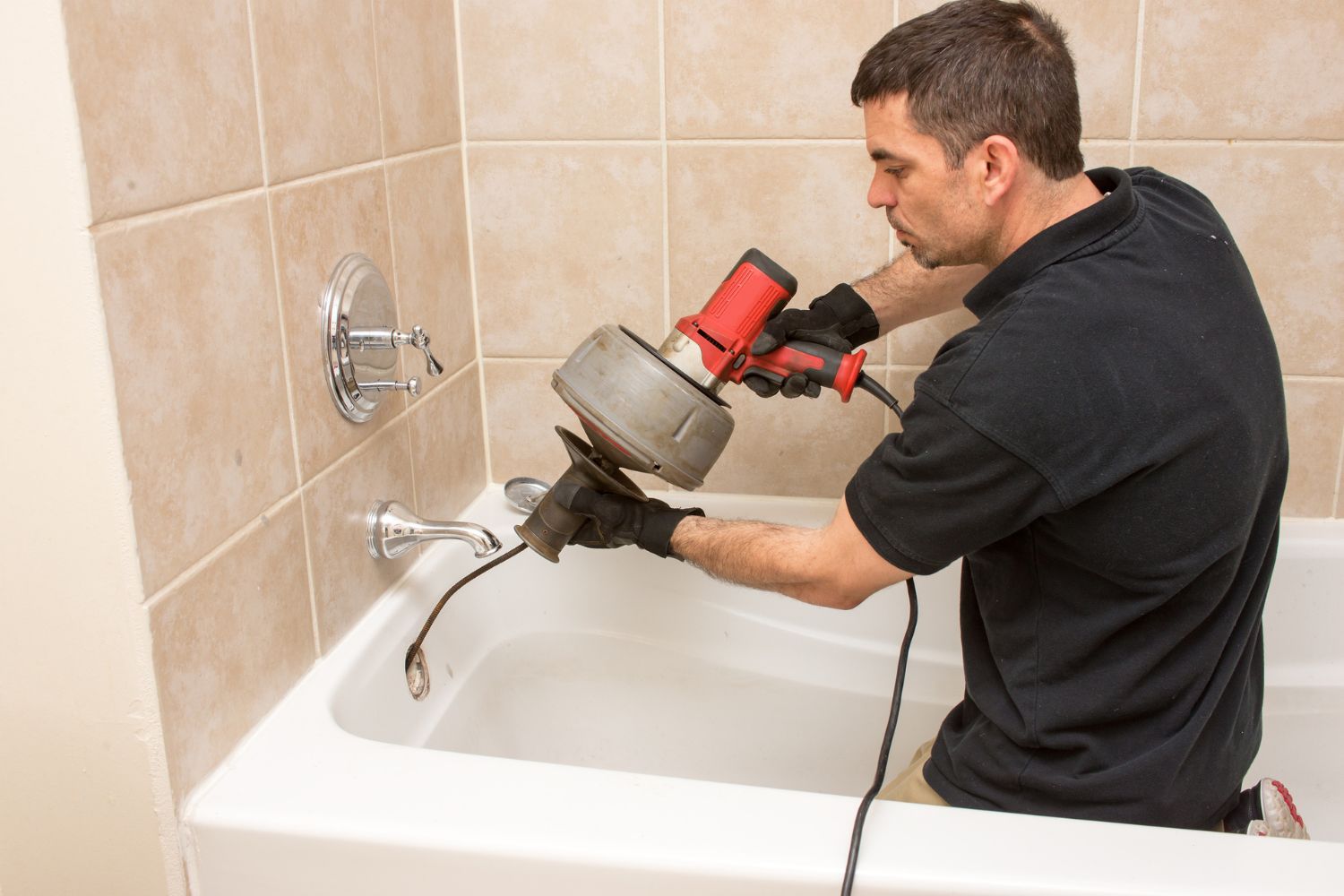
Additional Costs and Considerations
When budgeting for the cost to snake a drain, many homeowners will find that there are a few additional price factors and considerations that can change the final project price. These can include video inspection, the difference in price of snaking versus hydro jetting (discussed below), and additional repairs.
Video Inspection
The cost of a video inspection ranges from $250 to $1,300, with the national average at $700. Video inspection is necessary when the plumber isn’t sure what’s causing the blockage after an attempt to snake the drain. To locate the precise area of the blockage and find out what’s causing the clog, a plumber will push a high-resolution camera that’s mounted on a flexible metal rod through the pipes. The images will display in real time on a video screen that allows the plumber to see exactly where the issue is within the pipes or the main sewer line.
Snaking vs. Hydro Jetting
The method the plumber uses to clear the plumbing pipes also affects the price of the job. Snaking is the most common method, and it can cost from $145 to $350, while hydro jetting can run from $350 to $600. Also known as water jetting, hydro jetting is an eco-friendly and nonchemical method of clearing blockages that uses a high-pressure water hose to clear out debris, grease, tree roots, and more. The powerful jet of water clears more debris than snaking, but it can cause damage to older pipes and cause them to leak. Plumbers will commonly utilize video inspection to determine if hydro jetting will damage the plumbing and will use the best drain-clearing method for the age of the pipes and the cause of the blockage. If a home has multiple clogs, hydro jetting is typically the clearing method of choice.
Additional Repairs
On occasion, what may seem like a simple drain clog is a problem that’s actually caused by damaged pipes or a damaged main line. After a video inspection, a plumber may discover that the blockage can only be remedied by additional repairs or replacement of pipes. Some common reasons to repair or replace plumbing lines include sagging pipes, tree-root incursions, collapsed lines, or rock penetrations. Below are some of the typical costs associated with pipe repair or replacement.
- Bellied pipe repair cost. Bellied pipe repair cost ranges from $1,500 to $3,000. When a pipe begins to sag, it retains water and waste in the negative slope. This can build up over time and cause serious blockages. The only way to remedy a sagging pipe is to replace it.
- Broken or cracked sewer line pipe cost. Replacing a broken or cracked sewer line pipe can cost from $1,100 to $3,000.
- Collapsed line repair cost. Sewer lines can collapse due to tree roots, misaligned pipes, or because of the advanced age of the pipes. This type of repair can cost from $50 to $250 per linear foot, and many times replacement is more cost-effective than repair.
- Pipe replacement cost. Replacing plumbing pipes can cost from $50 to $450 per linear foot.
- Sewer trap replacement cost. A poorly functioning or outdated sewer trap costs from $200 to $325 to replace.
- Tree root removal cost. If tree roots have permeated the sewer line, the cost to fix the problem ranges from $100 to $600 plus the cost of a video inspection.
- Trenching cost. Trenching is used to expose the area of the sewer line that needs to be repaired or replaced. For standard-depth sewage lines, it can cost between $4 and $12 per linear foot, but for areas of the sewer line that are close to other utilities or are deeper than average, homeowners can expect to pay up to $24 per linear foot.
Overall, repairs and the cost to replace a sewer line can range from $1,000 to $7,500, depending on the accessibility to the pipe, the complexity of the repair, the length of the new pipe, and additional services including landscaping and foundation repair.
Cost to Snake a Drain by Type of Drain
The location of the clog and the type of drain affects the overall price of the job. The cost of clearing a blockage within the home is typically more budget-friendly than the cost to clear a clog that’s located farther down the plumbing system or out into the main sewer line. Below are the different types of drains and the average price ranges to clear them.
| Type of Drain | Average Price Range |
| Bathtub or shower | $100 to $250 |
| Kitchen sink | $100 to $220 |
| Laundry | $150 to $250 |
| Toilet | $100 to $275 |
| Main sewer line | $200 to $800 |
Bathtub or Shower
The cost to snake a drain in a bathtub or shower is $100 to $250. Shower and bathtub drains can clog with hair, soap, lint, and debris. Clearing a clog in this type of drain requires the removal of the drain assembly and using a drain auger to clear the blockage.
Kitchen Sink
Snaking a kitchen sink drain can run from $100 to $220. If the kitchen sink has a garbage disposal, the plumber will first determine if the disposal is the issue. If it is, garbage disposal replacement can cost from $200 to $550. If the clog is in the pipes, the drain-trap fitting and the drain arm need to be removed to snake the pipes.
Laundry
The cost to snake a laundry drain ranges from $150 to $250. Laundry drains can get clogged with hair, lint, dirt, laundry soap buildup, limescale, grease, and oil.
Toilet
Hiring a plumber to snake a toilet drain can cost from $100 to $275, depending on the complexity of the job. Minor clogs can usually be removed with a snake; if that option doesn’t work, though, the plumber may need to remove the toilet to remedy the situation. If backflow is coming out of other drains in the house, the problem is most likely located in the sewer line, and this situation can increase the overall cost.
Main Sewer Line
The cost to clean the main sewer line ranges from $200 to $800 and depends on the clearing method, clog accessibility, severity of the blockage, and local labor costs. Some signs that the main sewer line needs attention include a bad odor coming from the drains in the house, multiple plumbing fixtures that are draining slowly, gurgling sounds coming from the pipes, or sewage backup. It’s recommended that homeowners call a plumber to make main sewer line repairs, since many issues may result in pipes needing to be replaced. Sewer line repair costs can range from $1,000 to $7,500.
Do I Need to Snake My Drain?
There are several signs that can inform homeowners when a drain needs to be snaked or that there are issues with the main sewer line. Some of these include slow drains, water backups, unpleasant smells, gurgling sounds, or a clogged or overflowing toilet.
Slow Drains
If water drains slowly in the shower, tub, or sinks, there may be a clog that needs to be snaked. It’s common for hair, soap buildup, food scraps, or grease to block a pipe and cause the water to drain slowly. If there are clogs in a few different drains in the house, there may be issues with tree roots or corrosion in the main sewer line.
Water Backups
A significant sign of a blockage in the main sewer line is water that backs up into the toilet or a sink. If water backs up into a basement drain after a toilet is flushed, it’s a red flag that there’s an issue with the main line.
Unpleasant Smells
A clogged sewer line will push unpleasant smells through the pipes and out into the house. It’s recommended that homeowners call a plumber as soon as possible after noticing a foul smell from their drains since sewage backup can be the next problem.
Gurgling Sounds
Gurgling sounds from drains or bubbles that form in the toilet water after turning on the bathroom sink faucet are also signs that a drain needs to be snaked or repairs are needed in the main sewer line.
Clogging or Overflowing Toilet
A one-time toilet clog can usually be fixed easily with a plunger, but constant clogging or overflowing is a sign of a blockage.
Snaking a Drain: DIY vs. Hiring a Professional
A small drain blockage can be fixed by using various DIY methods and some homeowners prefer to try their hand at clearing the clog on their own before calling a professional. Knowing how to snake a drain with the best drain snakes to clear a simple blockage can save a homeowner money. Some common DIY remedies include using baking soda, vinegar, and boiling water to clear a slow drain. Chemical drain cleaners can be used with metal and plastic pipes while following the manufacturer’s instructions. Renting a snake to clear a drain can cost from $30 to $80 per day, while it can cost between $10 and $15 per day to rent a toilet auger. For multiple blockages or issues with the main sewer line, a professional plumber will need to be called to fix the problem. A professional plumber has the tools, equipment, and knowledge to diagnose a main sewer line problem and fix it correctly. It’s important for every homeowner to know what to do in case of tree roots in a sewer line. Hiring the best drain cleaning services or the best plumbing services can help avoid the headaches that come with having a clogged drain or sewer line.
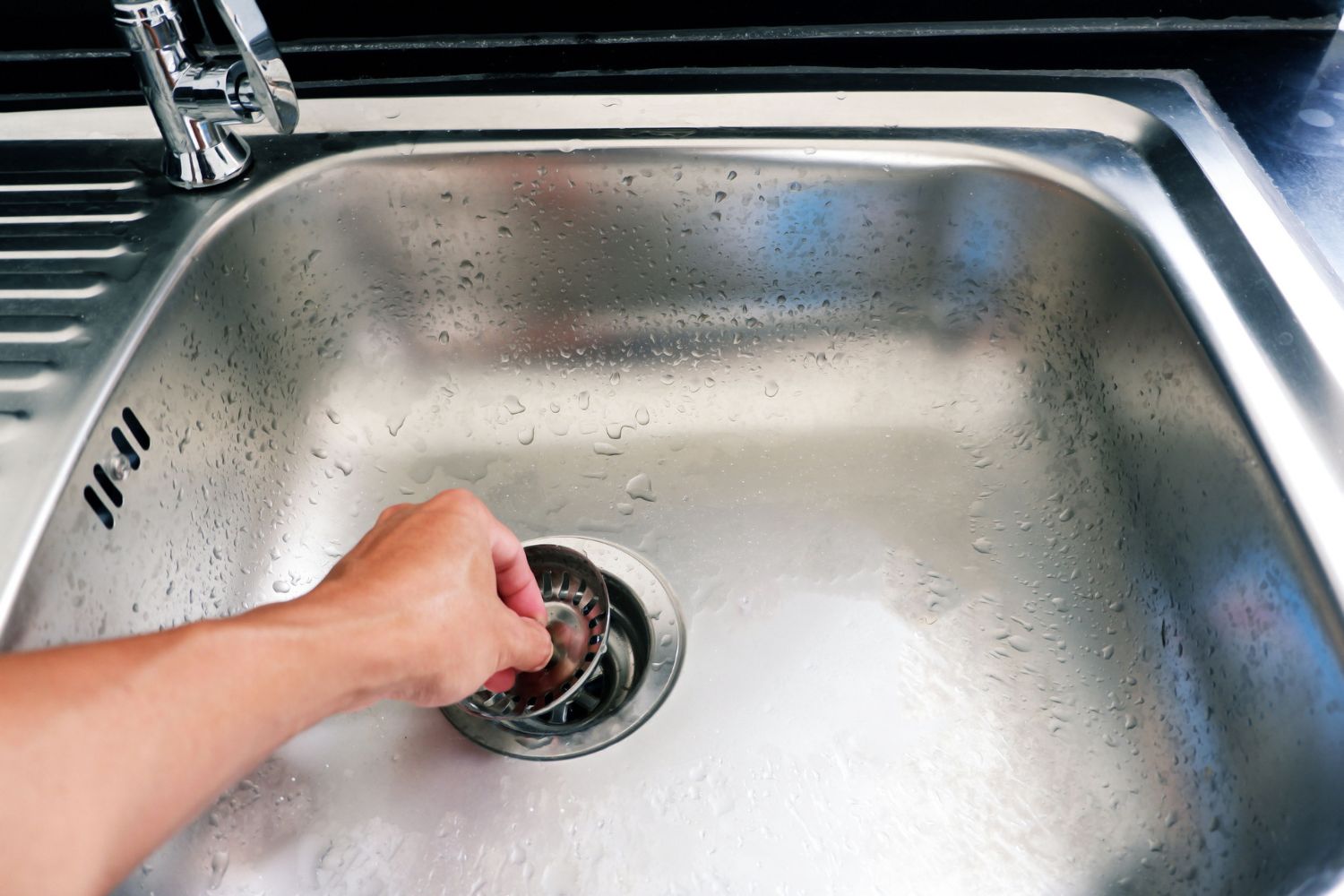
How to Save Money on the Cost to Snake a Drain
Snaking a drain can get rid of clogs and blockages that cause a slow drain, but the cost of professional plumbing services can quickly add up. Below are some money-saving tips to help save as much money as possible when faced with potentially expensive plumbing costs.
- Get multiple estimates. Get estimates from at least three reputable plumbers in your area to find prices that work with your budget.
- Use boiling water. Pouring boiling water down the drain can break a small clog apart to help a slowly draining sink.
- Get fizzy with it. The home remedy of adding baking soda and vinegar to a drain will create a reaction that can break up a clog and get the drain emptying quickly. Follow up the baking soda and vinegar mixture with boiling water to flush the drain clean.
- Use grease-busting dish soap. A few tablespoons of grease-cutting dish soap down the drain can cut through a minor grease clog in the pipes. Boiling water is the follow-up step for this cleaning method.
- Plunge it out. Minor clogs can be plunged away by using the best plunger for the job. Be sure to use a sink plunger for a sink and a toilet plunger for the toilet.
- Care for your drains. Using hair catchers in the tub or shower drain, avoiding pouring grease down the kitchen sink, and preventing food scraps from ending up in the pipes can prevent minor clogs and serious blockages.
- Check the home warranty. Some home warranties cover plumbing if they have standard or optional plumbing-system coverage.
Questions to Ask About Snaking a Drain
Asking a professional plumber the right questions about the cost to snake a drain can help avoid misunderstandings and save money. Before hiring a pro to snake a drain, homeowners will want to know all the important information about clogged drains and the drain-snaking process. Below are some questions for homeowners to ask before hiring a local plumber.
- Are you licensed and insured?
- Can you provide references?
- Do you provide written estimates?
- Do you hire subcontractors for any part of the process?
- Do you offer emergency repairs?
- What are your hourly rates?
- Do you charge a flat rate for drain snaking?
- Do you charge a trip fee or a service fee?
- How will you clean my drains?
- What if you find problems in the main sewer line?
- What caused the clog in the pipes?
- How can I prevent this problem from happening again in the future?
- Who will snake the drain?
- Will you have to turn off the water to clear the clog?
- Do you offer any warranties or guarantees?
- Do you have a service plan?
- How can I leave a review of your work?
FAQs
Homeowners who have never hired a plumber to snake a drain may have several questions about drain-clearing methods. Below are some frequently asked questions to make the decision-making process easier for homeowners.
Q. How much does it cost to have a plumber snake a toilet?
The cost to have a plumber snake a toilet ranges from $100 to $275, with the average price at $190. Knowing how to snake a toilet is a beneficial money-saving skill for everyone.
Q. How far can a plumber snake a drain?
Drain snakes can be between 25 and 100 feet long. The shorter 25-foot snake can unclog bathroom sinks, tubs, and showers. A snake between 25 and 75 feet long can be used on kitchen and bathroom sinks, roof vents, and washing machines. A 75- to 100-foot-long drain snake can be used to clear drains that are 3 inches and larger.
Q. How long does it take to snake out a sewer line?
Snaking a sewer line can take hours compared to the few minutes it takes to clear a small clog in a toilet, sink, or tub drain.
Q. Can snaking a drain damage pipes?
Snaking a drain can cause damage to pipes if the wrong type of snake is used or if it’s used incorrectly. A snake can scrape and scratch the inside of a pipe and can cause leaks and other draining issues.
Q. What are the risks of snaking a drain?
Using a drain snake with too much force can scratch the inside of a pipe and damage the coating. This can cause rusting, leaks, and other issues.
Q. Can a drain snake break a toilet?
Not using a toilet auger to clear a clog can damage the porcelain of the toilet bowl and cause structural issues which can lead to the additional cost to replace a toilet. If the toilet plumbing is older, a regular drain snake could scrape and damage the pipes. A toilet auger has a soft, rubberized head that won’t harm the toilet or the plumbing.
Q. How do you know if you need to snake a drain?
There are several signs that a drain may need to be snaked, which include water backing up, multiple drains clogged at once, a toilet that bubbles or makes a gurgling sound, unpleasant odors coming from the drains, and a slow drain.
Q. Why is my drain still clogged after snaking?
If a drain is still clogged after snaking, the P-trap may still be clogged or the blockage may be in the main sewer line.
Q. Why is my drain snake not going down?
There are a few reasons a drain snake won’t go down a drain. These can include using the wrong-size snake, using a damaged snake, using too much force (which causes the snake to buckle or bend back on itself), or the clog is too large to be dislodged with a drain snake.
Q. How often do you need to snake a drain?
Many plumbing experts recommend cleaning the drains in a house once a year. This can prevent potential blockages and remove any buildup.
Q. What is an alternative to snaking a drain?
An alternative to snaking a drain is hydro jetting. This process uses a high-pressure water hose to dislodge clogs. DIY methods to snaking a drain include using baking soda, vinegar, and boiling water; dish soap; or a plunger.
Q. Can a drain snake get stuck?
On occasion, drain snakes can get stuck. If that happens, the U-bend at the bottom of the drain will need to be disconnected and the snake can be fished out that way. If that doesn’t work, it’s recommended to call a professional.
Sources: HomeAdvisor, Angi, HomeGuide, Forbes

